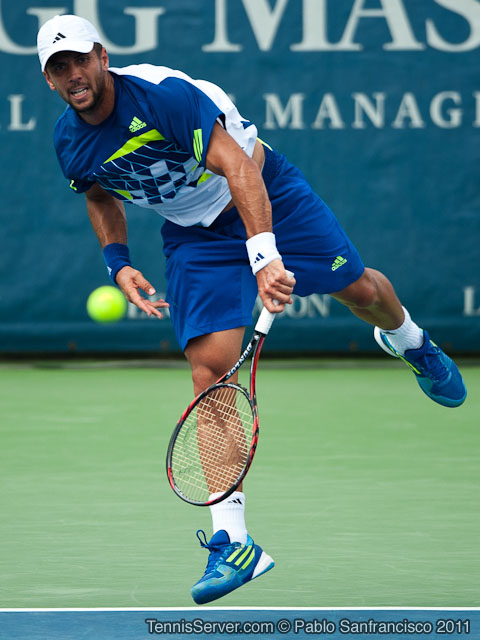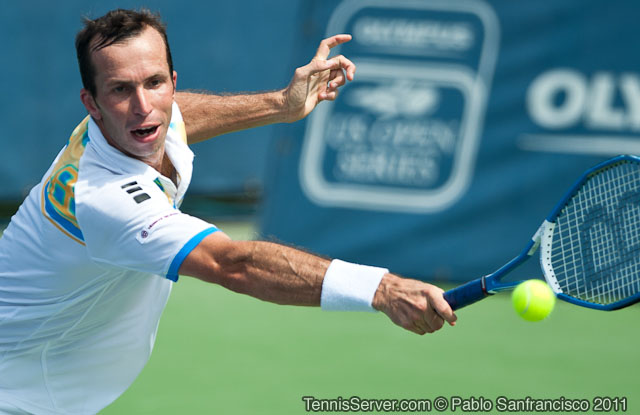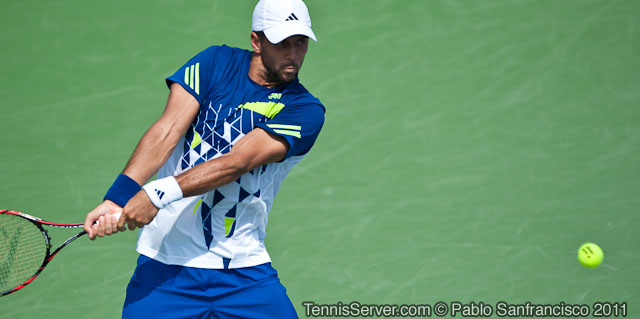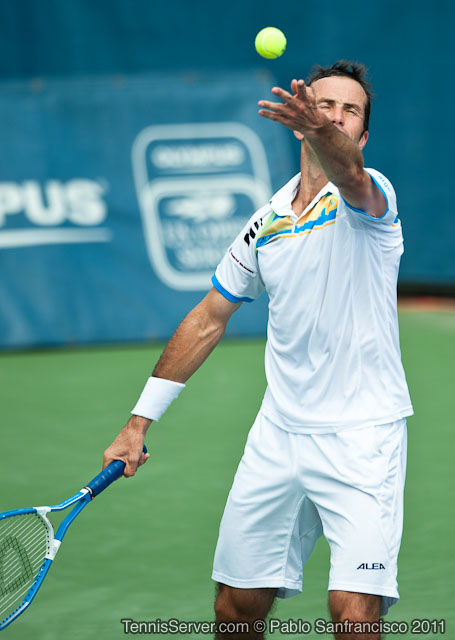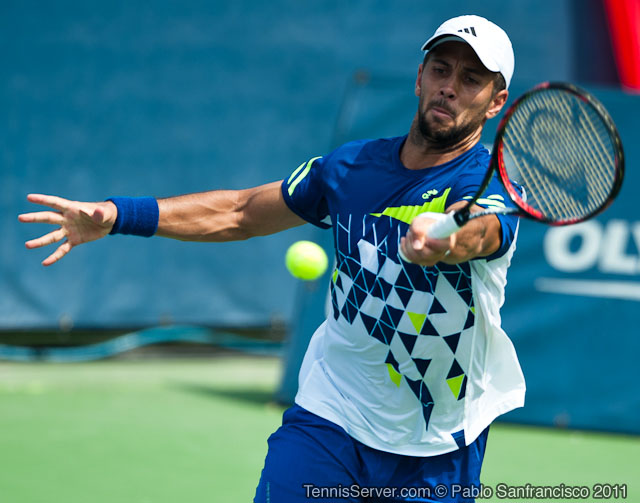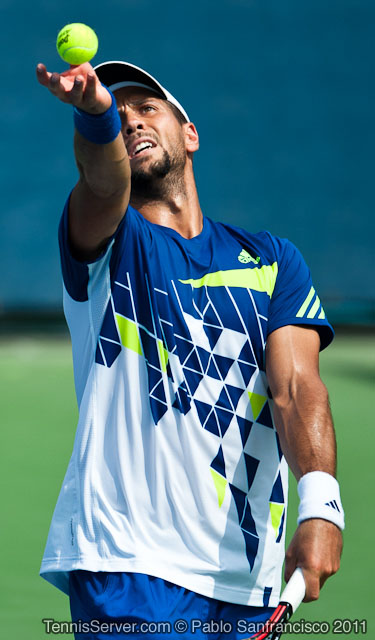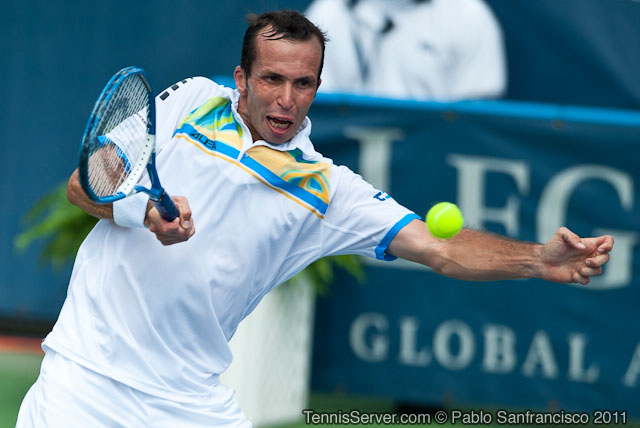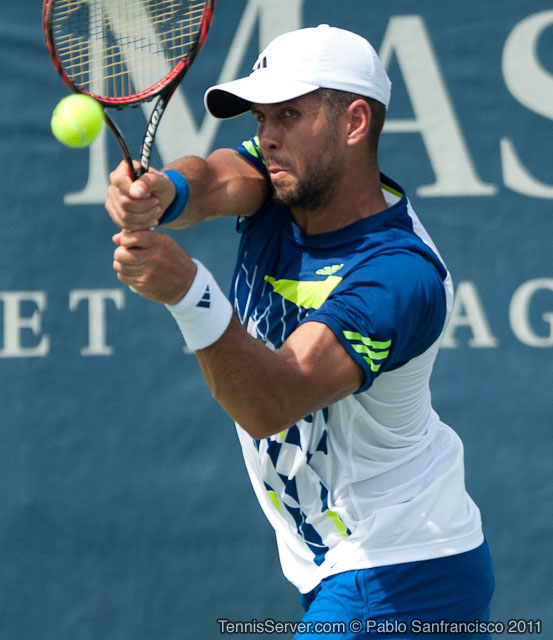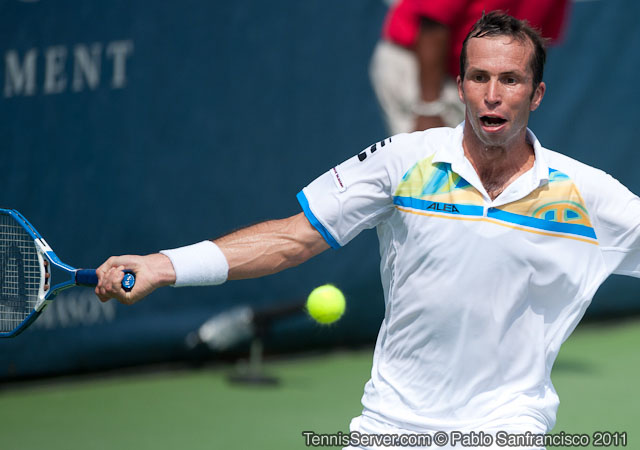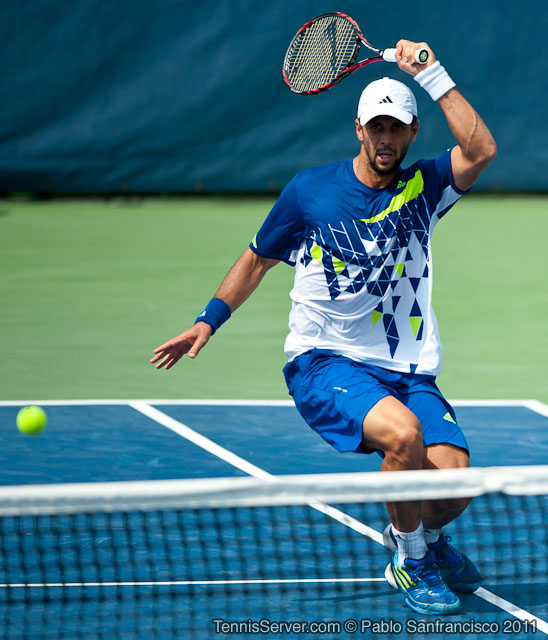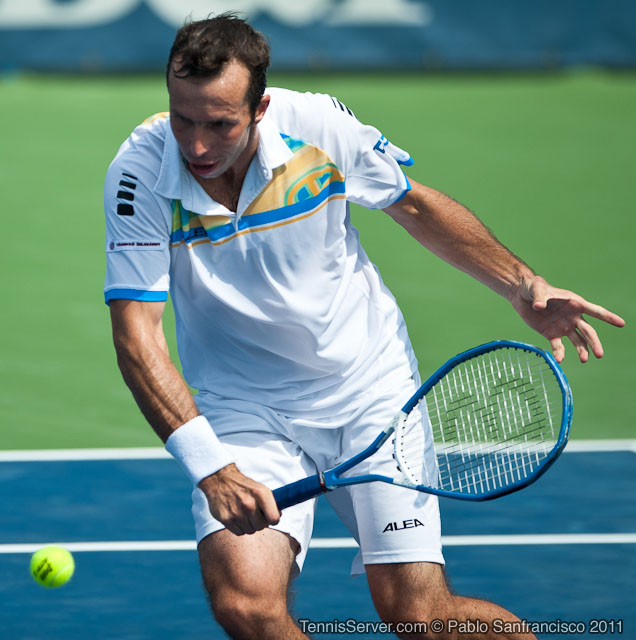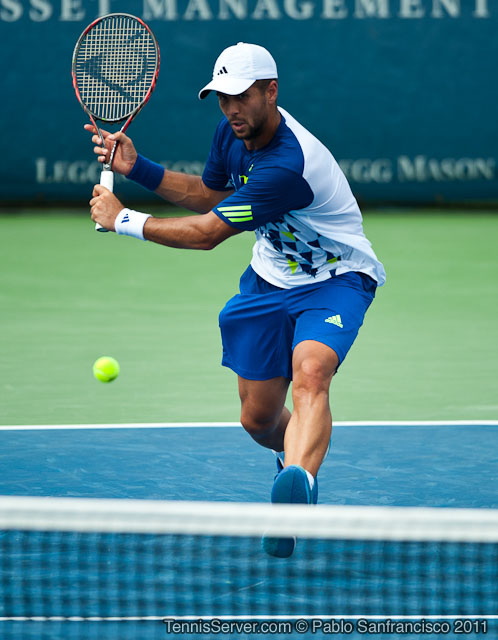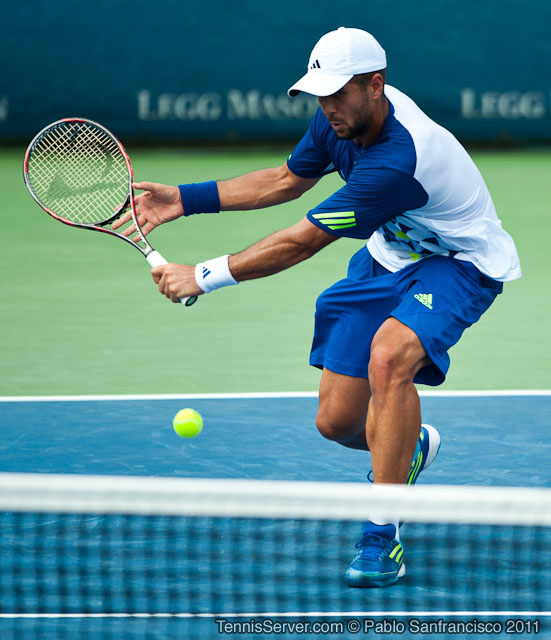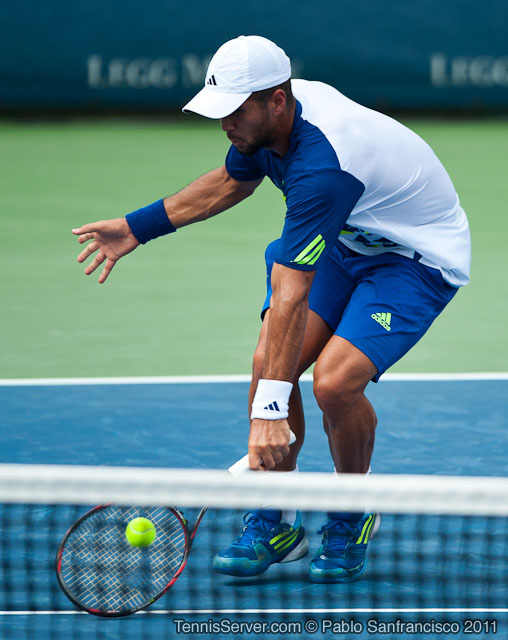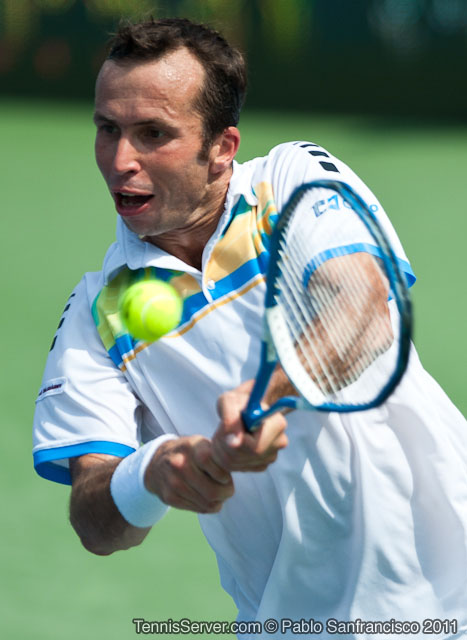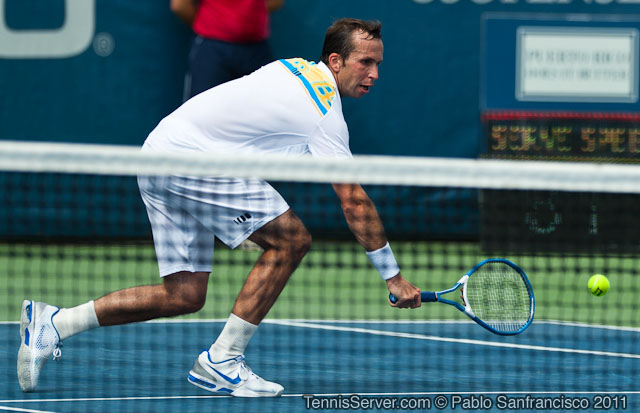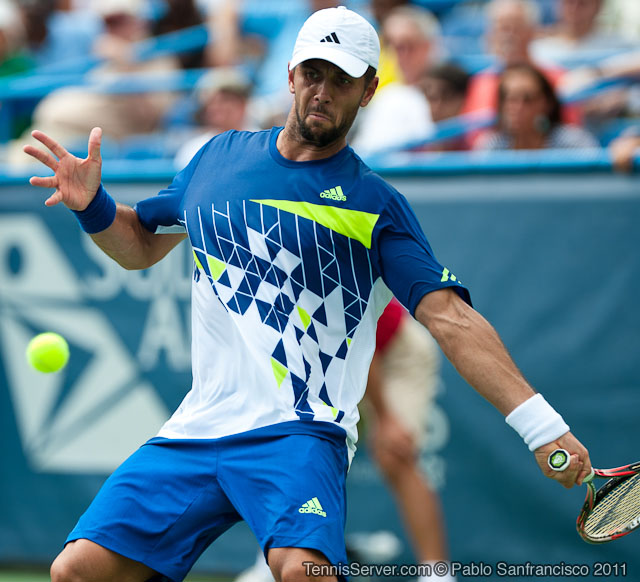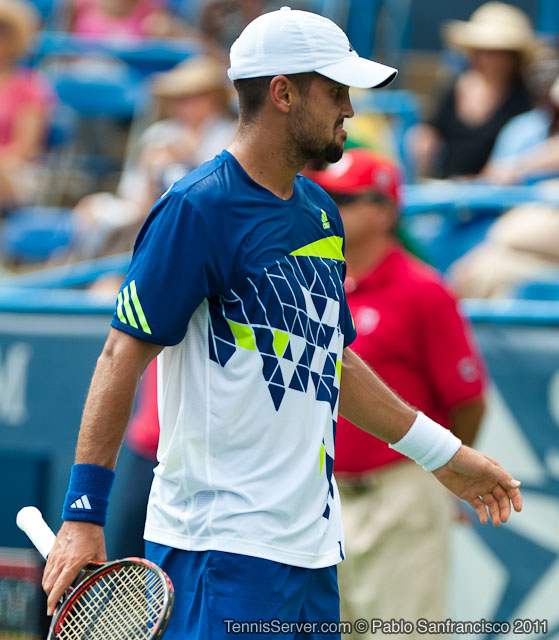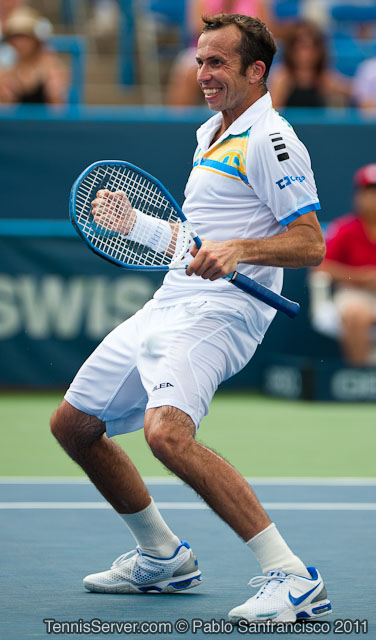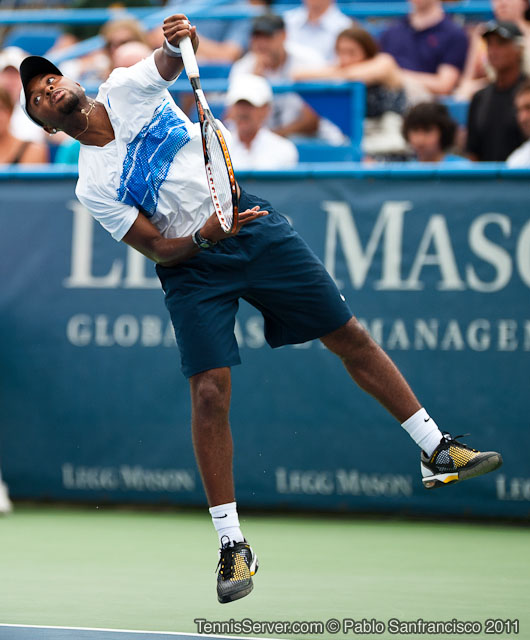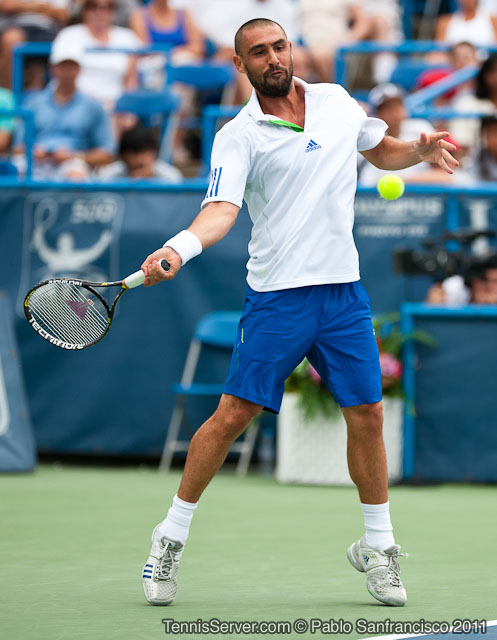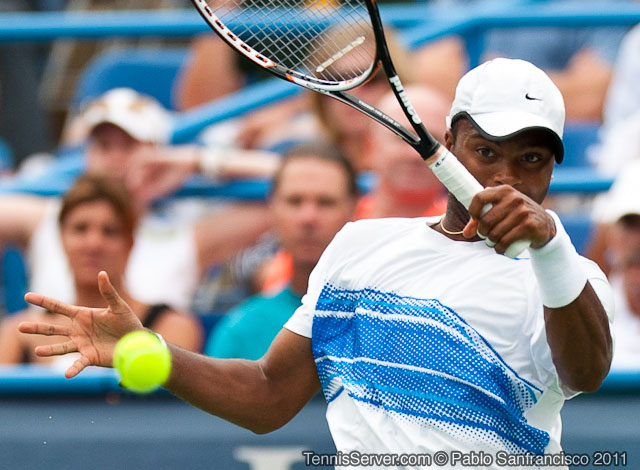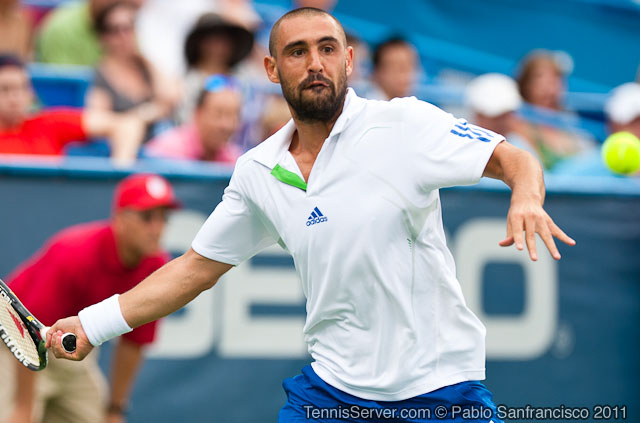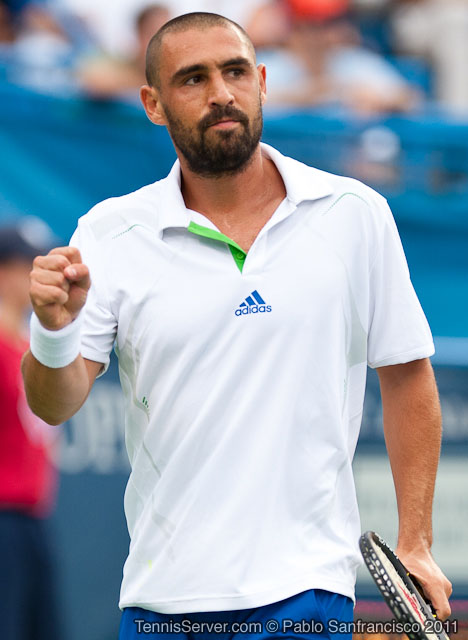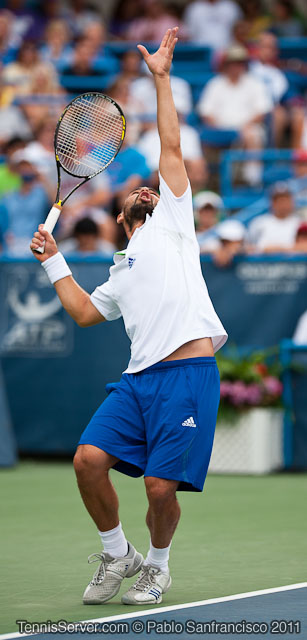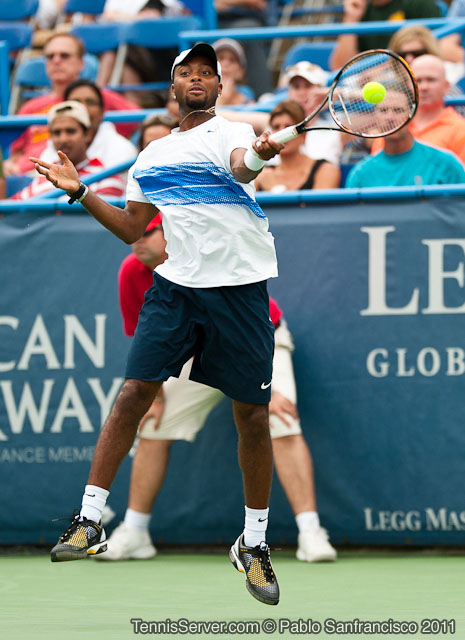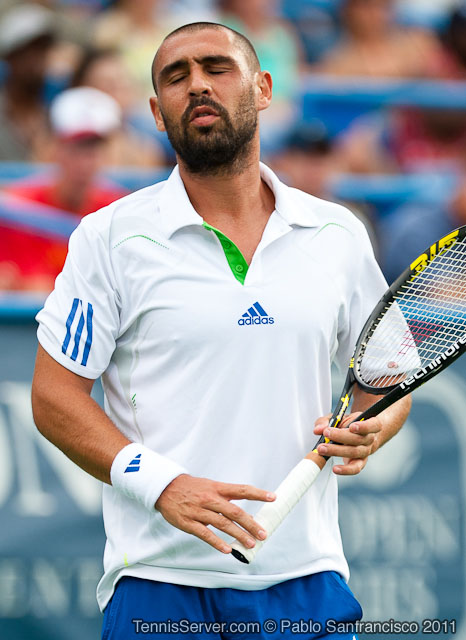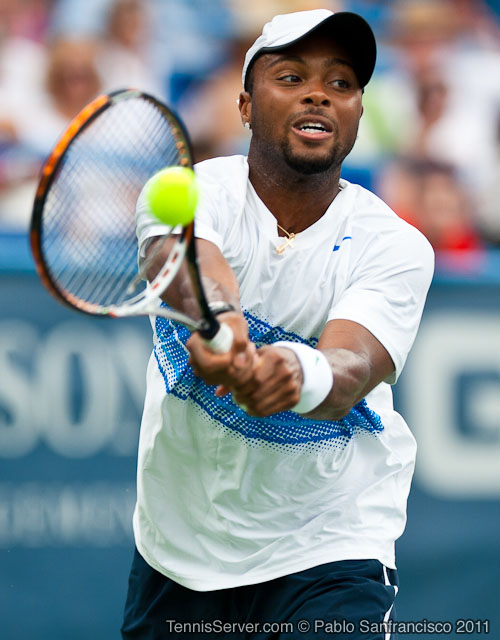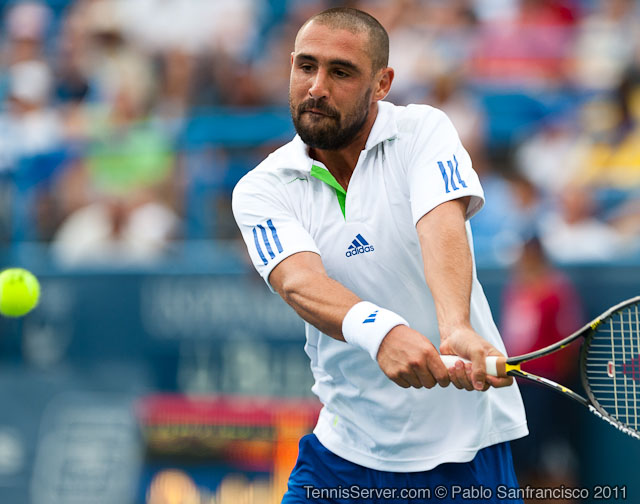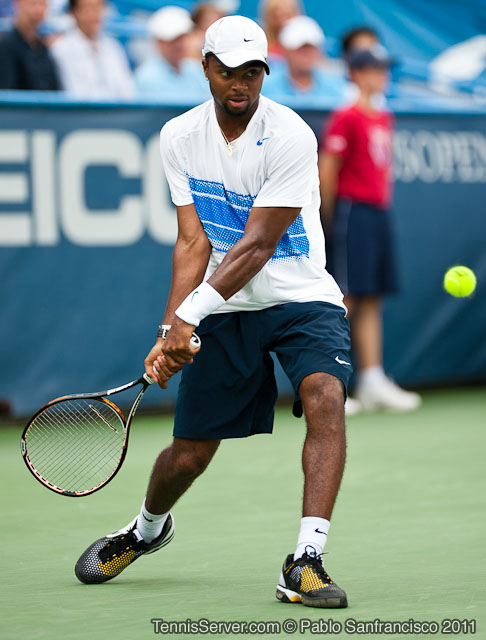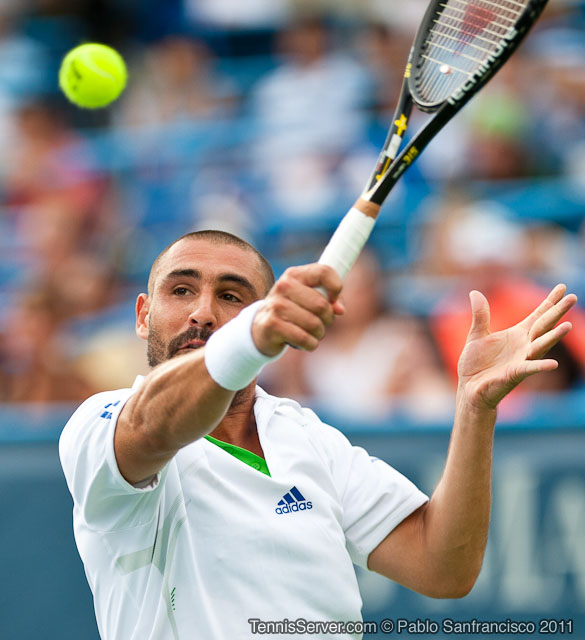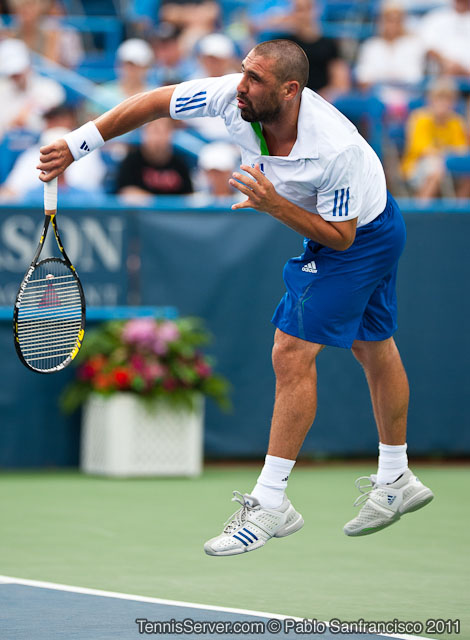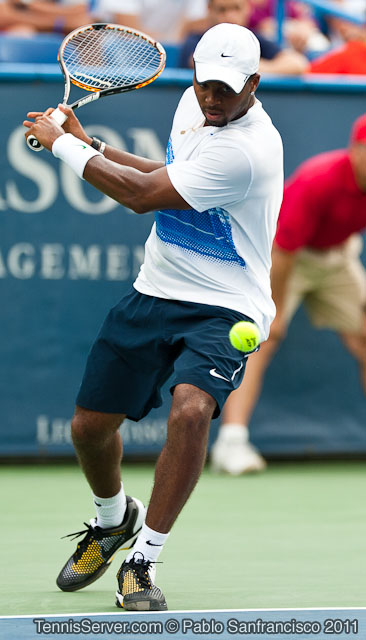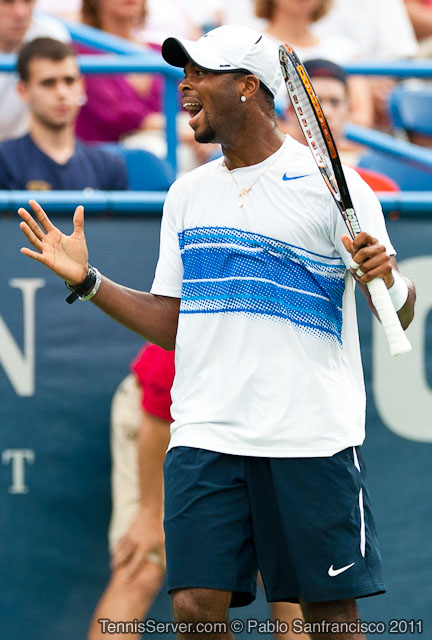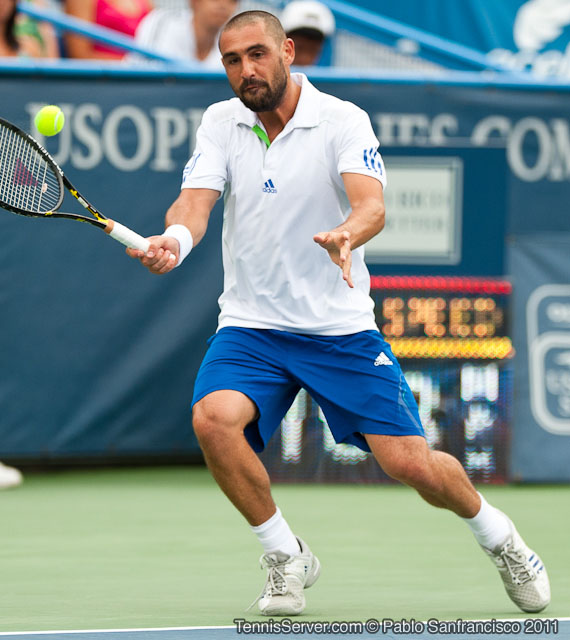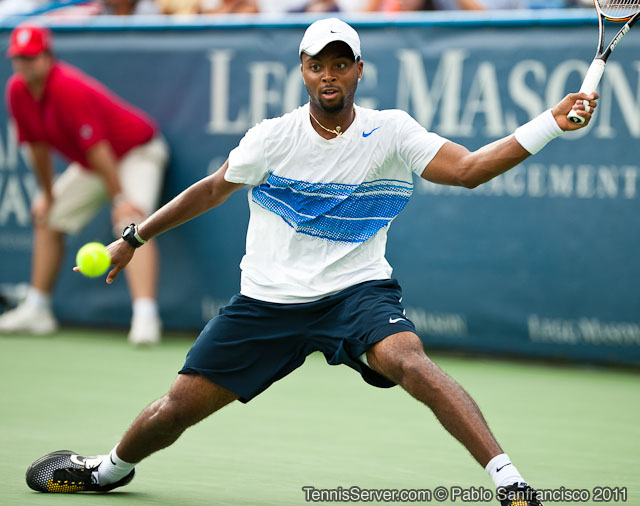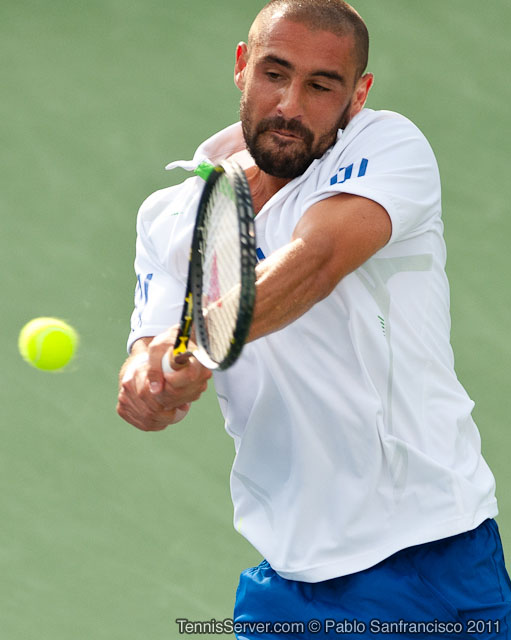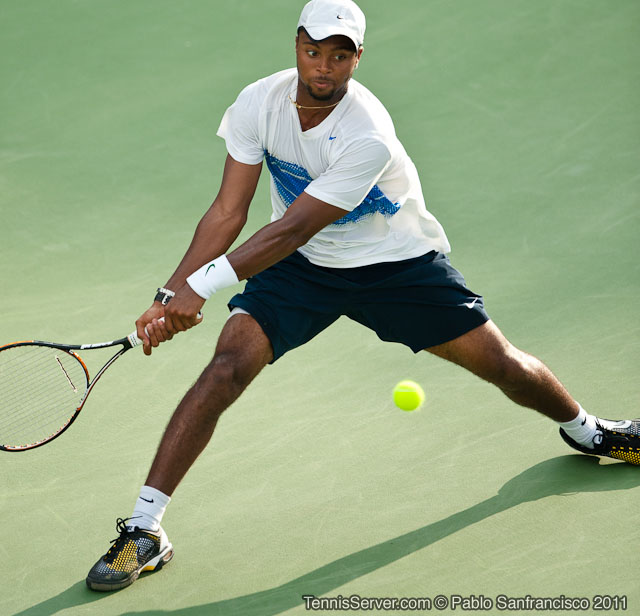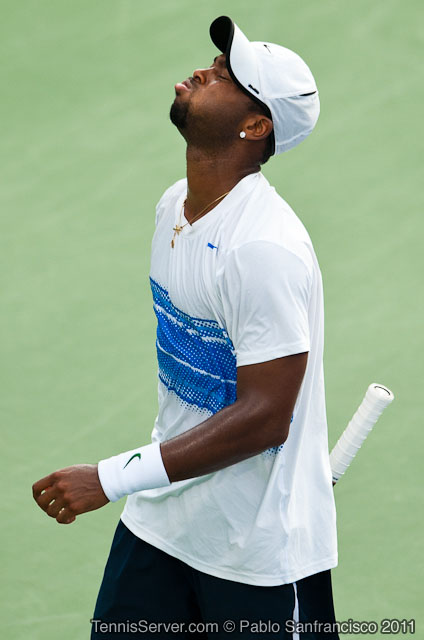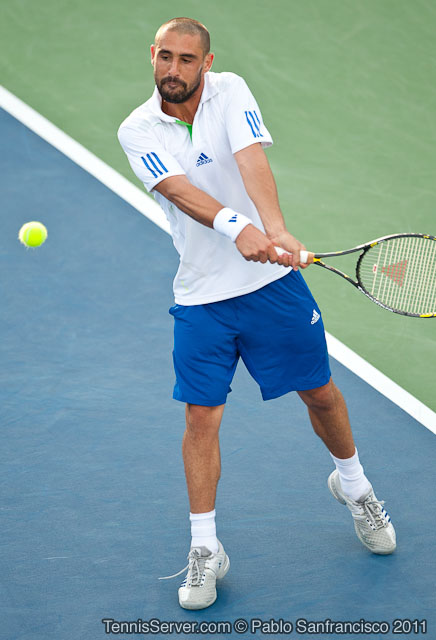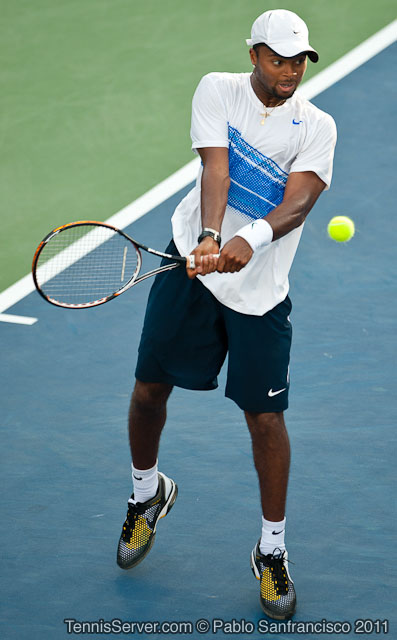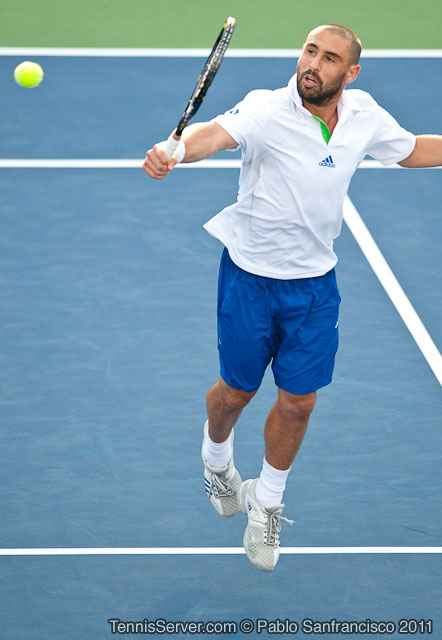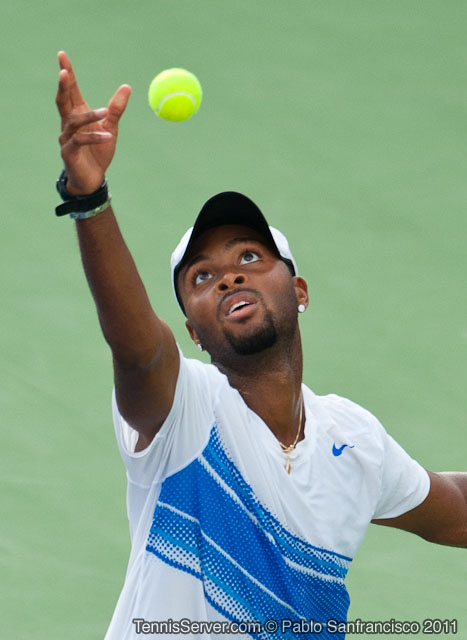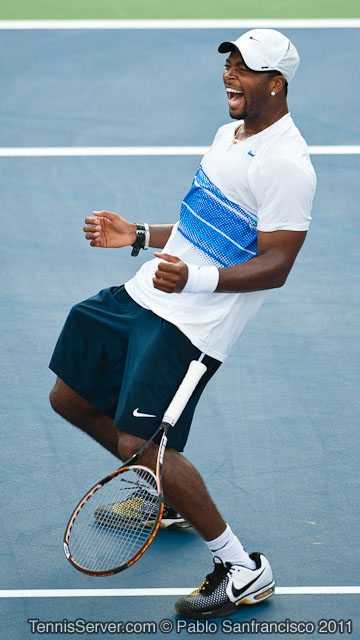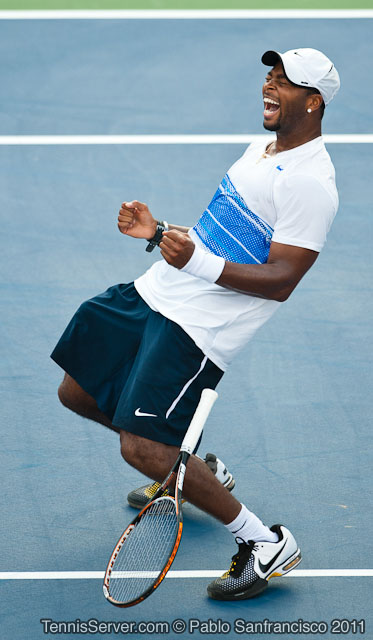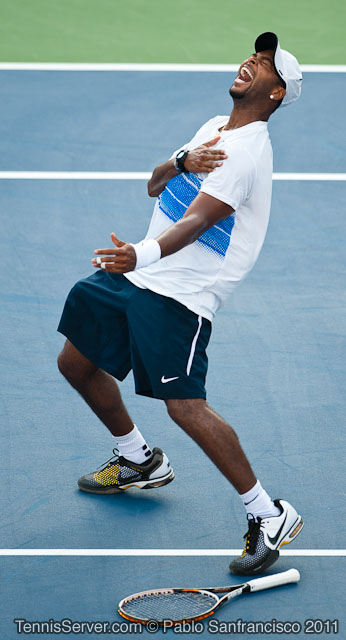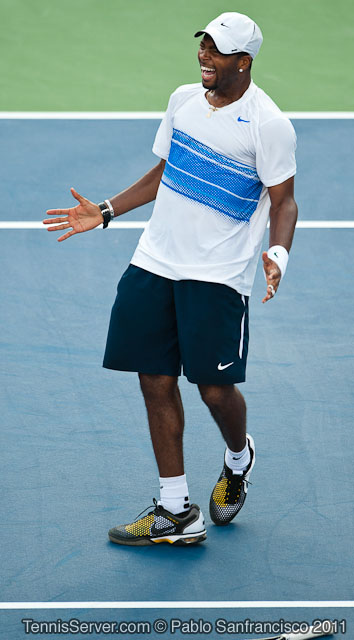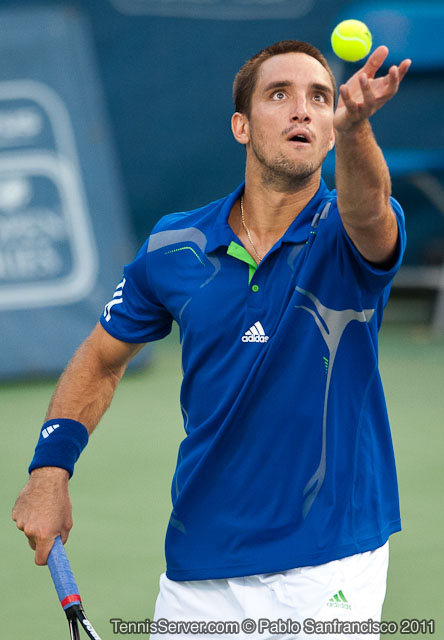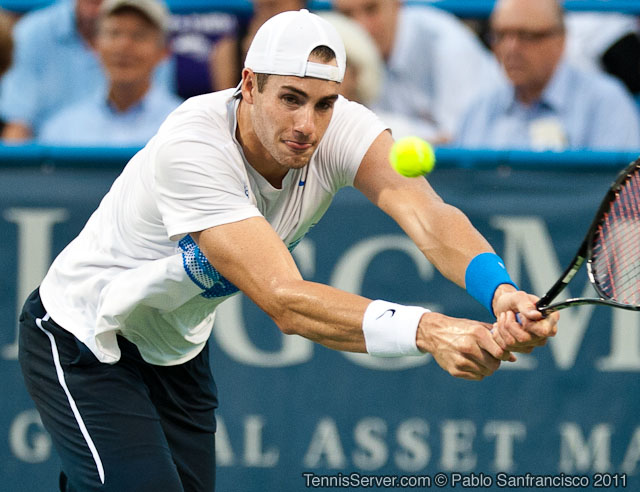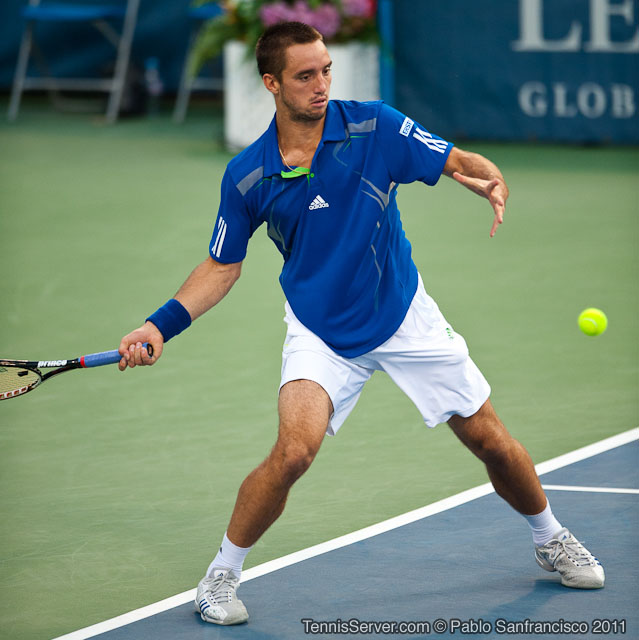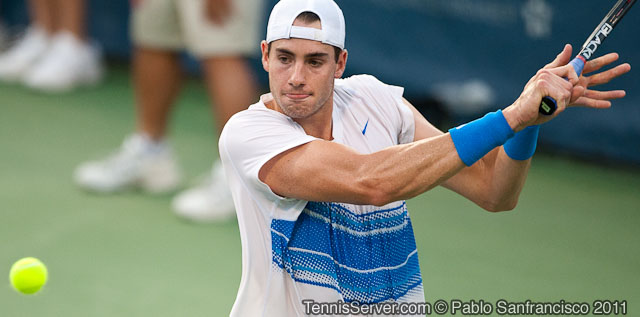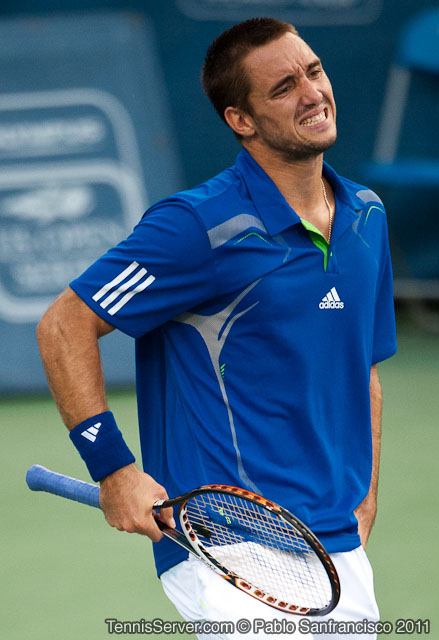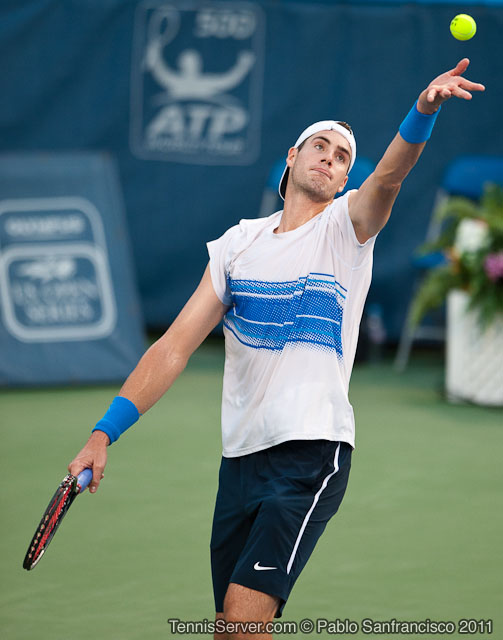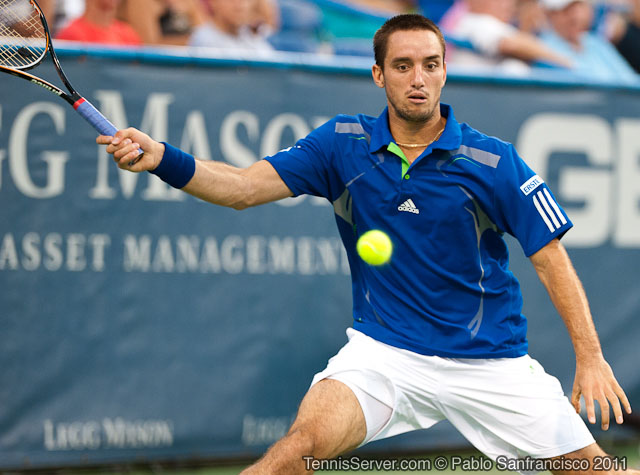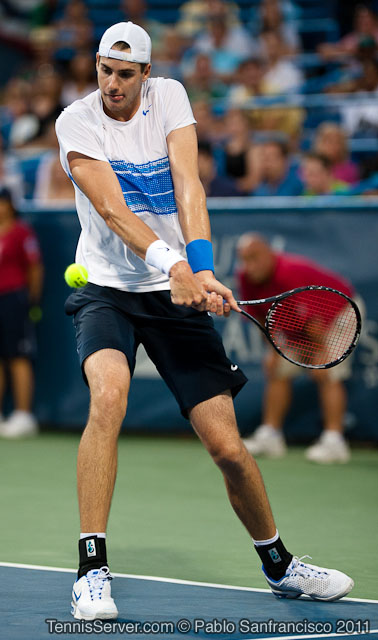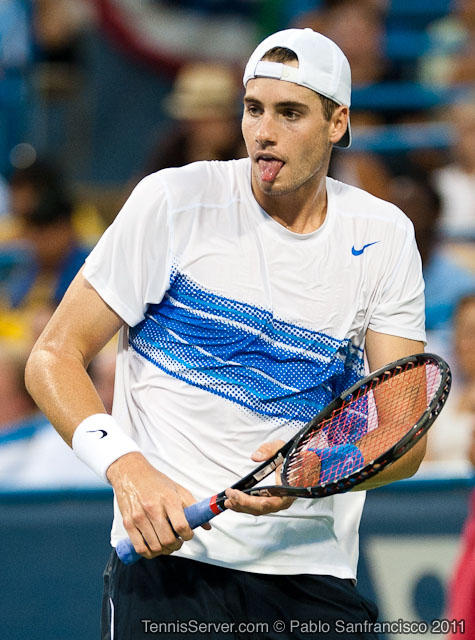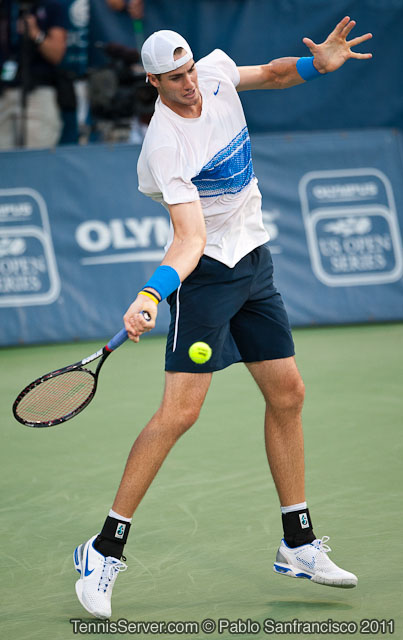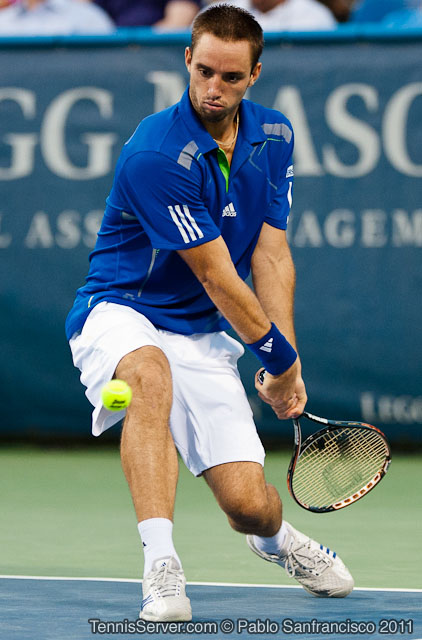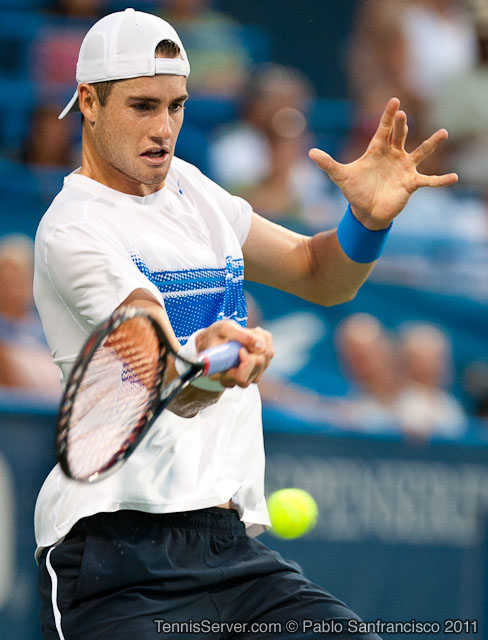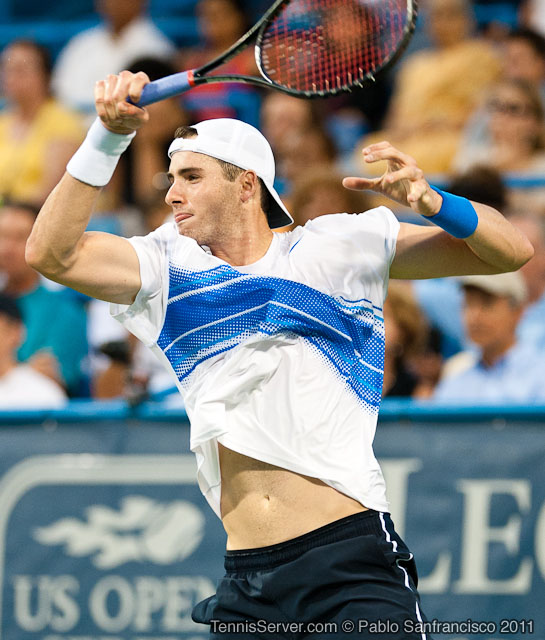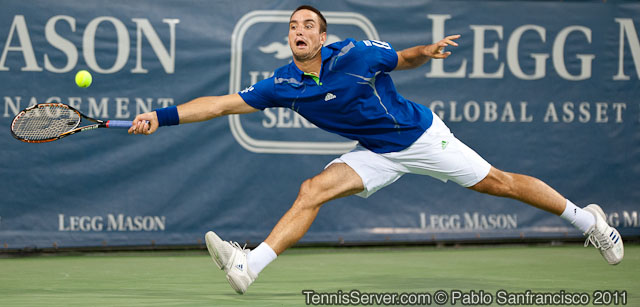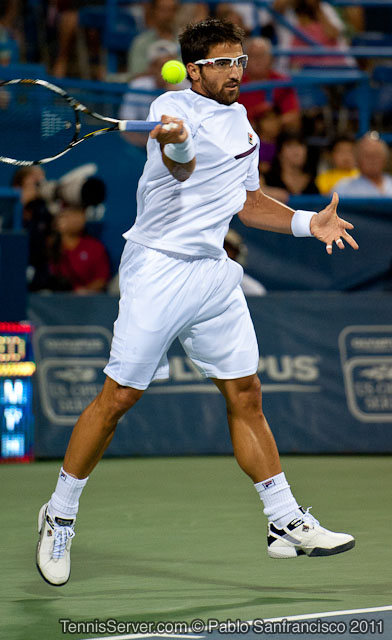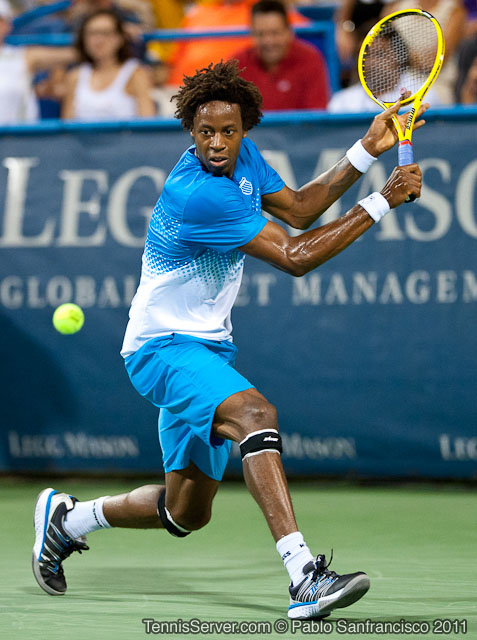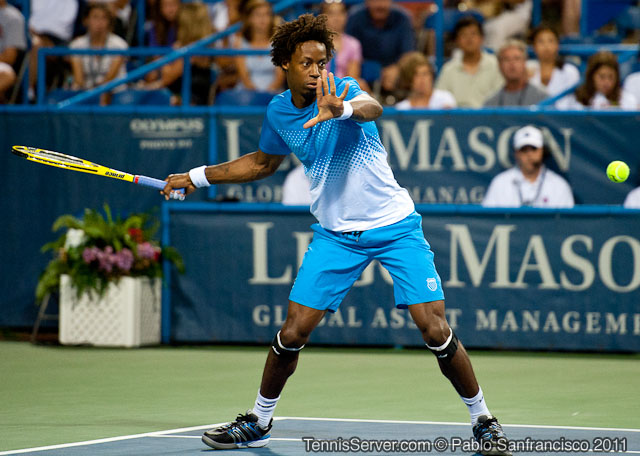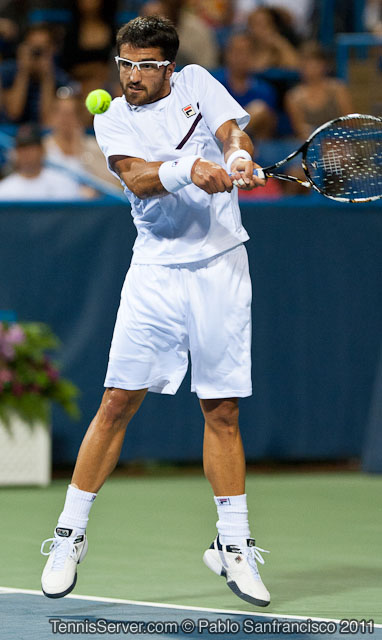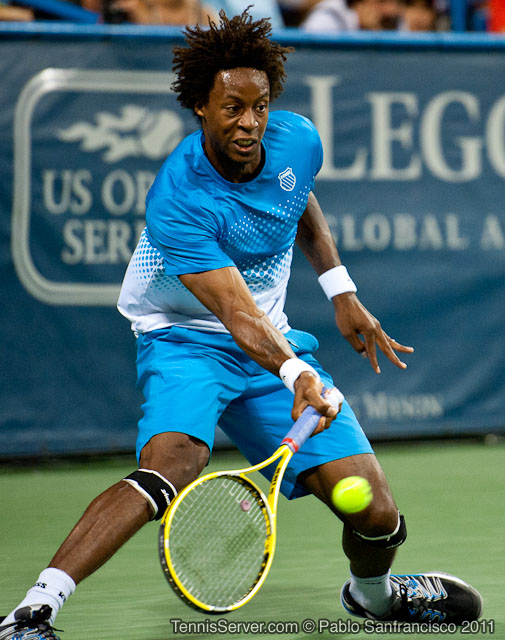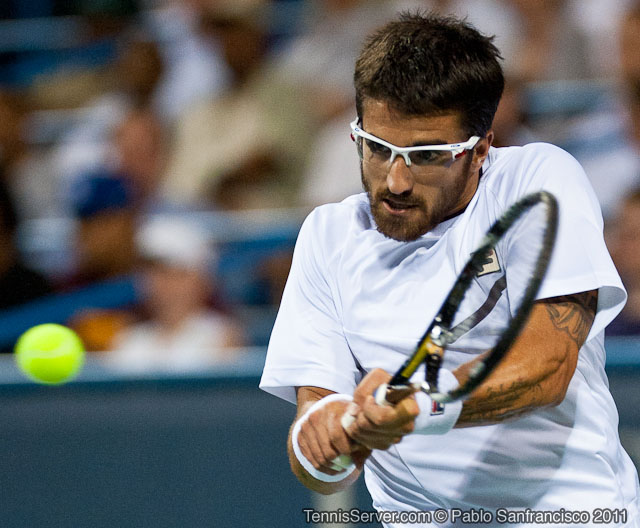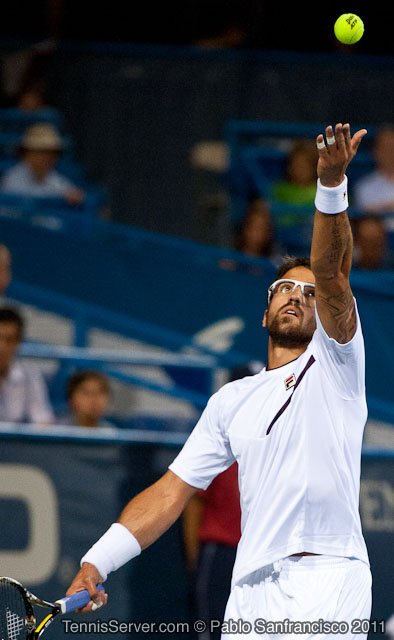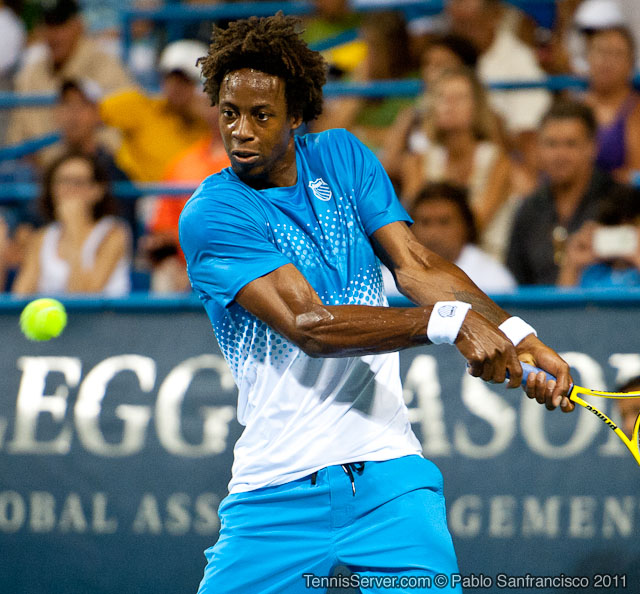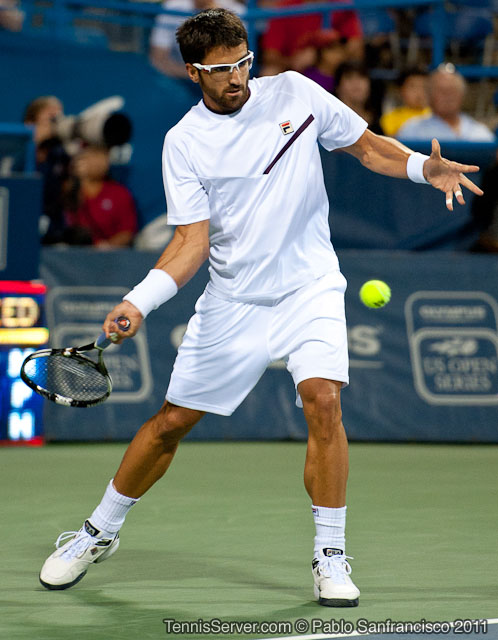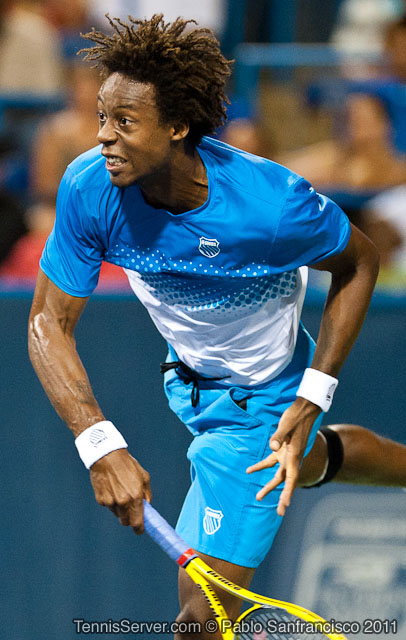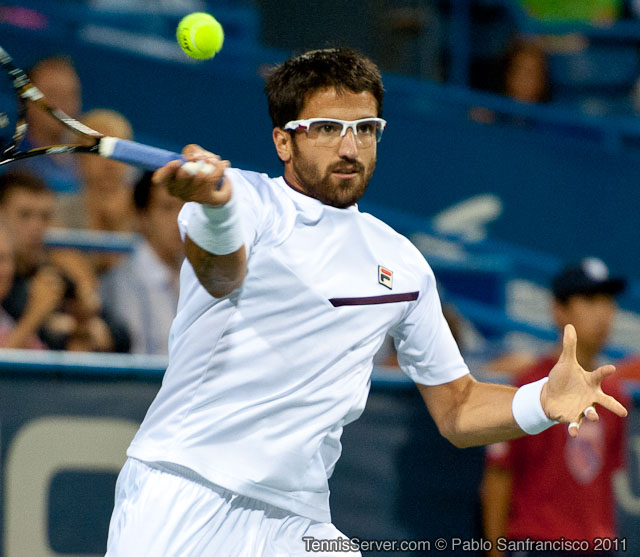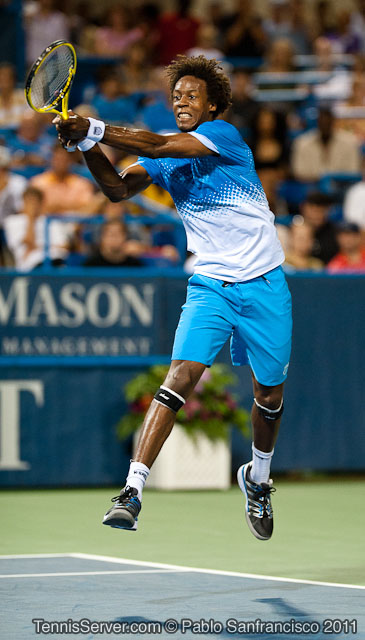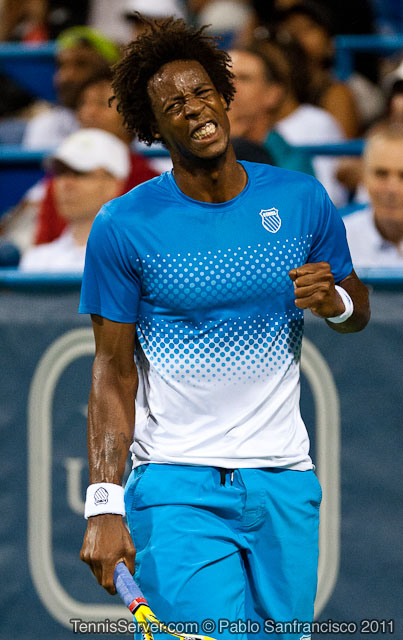|

 |
2011 Legg Mason Tennis Classic - Washington, DC, USA
August 5, 2011
Editorial By Ray Bowers. Photography by Pablo Sanfrancisco.

Ray Bowers |
Legg Mason Friday
Yesterday's heavy card produced the tournament's eight singles quarter-finalists. Only one of them, Gael Monfils, was currently ranked in the world's top ten, two others -- Troicki and Verdasco -- in the second ten, surely with aspirations of breaking into the elite group. Today's winners will receive more than double the prize money earned in the week so far and will also have a chance at the $264,000 prize awaiting the champion. The ATP points earned with each match win are also highly sought as keys to entry and seeding in future tournaments.
The afternoon began amid sunshine, light breeze, and comfortable temperature. Looking down on Stadium Court from the press box is assuredly one of life's memorable pleasures. Warming up was left-hander Fernando Verdasco, 27, born in Madrid and the only representative of Spain's Armada at the Legg Mason. Historically, Fernando's winning percentage has been considerably stronger on clay than on hard courts. He is a hard server and striker, good in extended rallies though not a pure dirt-court grinder. He arrived here from a second-place finish on the red clay at Gstaad, Sweden, last weekend.
Fernando's opponent, Radek Stepanek, 32, had last appeared two weeks ago, winning two matches before losing to Gael Monfils on clay at the German Championships, Hamburg. Radek's winning percentages show that his past success has come on hard courts, one-sidedly more so than on clay. Fernando and Radek had split their six past matches, where Fernando had won the last three. With a clear edge in the rolling-12-month ATP rankings, Verdasco seemed the clear favorite.
As expected, Fernando's firepower was visibly the more potent on this day. His ace count outnumbered Radek's, 8 vs. 1. But that was less important than Radek's (1) superior mental concentration and (2) greater variety in tactics. Very effective, for example, was Radek's measured use of serve-and-volley tactics, especially at critical times in the score. Radek's drop shots were sometimes unsuccessful, but they served to disturb the patterns in Fernando's rocketry. When Fernando turned up his heaviest attack toward the end, Radek answered every blow to his forehand with a strange-looking racket flip that was so simple to delivered that it was impenetrable. Then when a shot finally came to his backhand side, Radek's two-hander pumped out a just-as-reliable but considerably heavier missile.
The final game seemed to summarize Radek's edge. It began with two blistered forehand serve returns by Ferdinand, the first off an 87-mph second serve by Radek, the second off an 111-mph first serve. Both winners were untouchable by Radek. The next two points were just as short. Both consisted of similar rocket serve-returns by Fernando except that both of them screamed out, well beyond baseline. The whole sequence seemed mindless. With the score now equalized at 30-all, Stepanek then closed matters in style, first with a fine stretch volley and then with a superb ace to the wide corner -- Radek's only ace of the match.
Many readers probably watched at least part of the televised matches that followed. In the first of these, Donald Young, 22, ranked #128, defeated Marcos Baghdatis, 26, ranked #26, who seemed surprised at the quality of the American's play. At first Marcos seemed intent on overpowering Donald, but Marcos's battering mainly produced errors by Marcos, even as Donald's defensive skills not only blunted the strongest of his opponent's bids but also allowed Donald to reply with his own attacking.
Marcos changed his approach in the second set, trying now to place every shot with accuracy and depth, no longer seeking to dominate with pace. This worked a little better, Marcos's reducing his errors. Each player broke the other's serve twice during the set, and the set-ending tiebreaker reached four points all. The match ended three points later, all of them decided by Donald's brilliant play with one or the other of the opponents at net.
Young thus defeated a much higher ranked opponent by excellent defense, sufficient offense, sound court management, and his opponent's bad luck in missing several critical shots extremely closely as measured by the electronic tracking system. His newest victory confirms that Donald is a clear riser in the sport, worthy of close watch in the months to come. That his skills should be adaptable to all surfaces seems likely.
The next quarter-final matched John Isner, 26, ranked #35, with Viktor Troicki, 25, ranked #15. Troicki, from Serbia, had twice before defeated John without loss.
At first Viktor seemed a more likely winner than James Blake against Isner the previous evening. Like Blake, Viktor moved athletically, showed excellent confidence, had a similarly potent serve. Quickly Viktor adjusted his serve-returning position backward as if to improve his serve-returning percentage. But with all his assets, including an ability to hold serve that at first seemed absolute, like most of John's opponents Viktor could not seriously threaten to break John's serve. John indeed won the set-ending tiebreak game, putting the first serve into play in all six of his serving points, winning all of them. Viktor lost just one point on his own serve -- the very first point of the tiebreaker. Then the second set also resembled Blake's the previous date, as in both cases Isner lost a serving game early and was thereafter unable to recover.
The third set broke the pattern of the earlier script. Isner had several times stretched his back as if hurting, and his serving velocities had declined in set two. They remained lower than before, but now John was occasionally coming forward behind his serve. More significant was a remarkable improvement in John's ground-stroking. He now became often the heavier, more aggressive stroker, driving Viktor to the corners and directing the ball to opposite corners, producing several ground-stroke winners, all amid surprisingly few errors. Shaken, Viktor helped with some uncharacteristic misfires, and when the set ended Viktor had lost serve three times.
It was a stunning reversal of expectations by the big man. For the full match, John's first serve found the box 79% of the time, and John won 81% of these points. Percentages this high are almost never seen.
In the late match Gael Monfils completed Saturday's semi-final line-up by defeating Janko Tipsarevic. The outcome was decided in straight sets, but unlike in the earlier matches the higher ranked player was the winner. Gael had a huge edge in first-serve effectiveness, including a 4 vs. 0 edge in aces.
Radek Stepanek (CZE) {white shirt} d [5/WC] Fernando Verdasco (ESP) 64 64
Donald Young (USA) {white hat} d [7] Marcos Baghdatis (CYP) 63 76(4)
[11] John Isner (USA) {white shirt} d [3] Viktor Troicki (SRB) 76(5) 36 61
[1/WC] Gael Monfils (FRA) {blue shirt} d [6] Janko Tipsarevic (SRB) 64 64
Earlier Columns from this Event:
August 4, 2011 Legg Mason Classic: Monfils, Isner, Blake, Young, Sweeting, Russell
August 3, 2011 Legg Mason Classic: Donald Young, Jurgen Melzer & Lots Of Rain
August 2, 2011 Legg Mason Classic: Harrison, Haas, Blake, Nalbandian, Zverev, Delic
August 1, 2011 Legg Mason Classic: Blake, Young, Stepanek, Petzschner, Sitak, Ito
  
Player Profile Index (Men) | Pro Tennis Showcase Archive | Player Profile Index (Women)
|
SUBSCRIBE TO THE TENNIS SERVER PHOTO FEED
|
All Tennis Server photography is copyrighted by the photographer and/or the Tennis Server, and all rights are reserved. You may not copy these images without permission. While you are welcome to create hyperlinks to Tennis Server web pages, you may not embed these images into other web pages or blogs without permission. To request permission, please use this contact form. Please be sure to clearly indicate exactly which photograph(s) you are requesting permission to use, as terms and conditions will vary depending on the photographer and the photograph.
|
 |
|

|





 You will join 13,000 other subscribers in receiving news of updates to the Tennis Server along with monthly tennis tips from tennis pro Tom Veneziano.
You will join 13,000 other subscribers in receiving news of updates to the Tennis Server along with monthly tennis tips from tennis pro Tom Veneziano. 
